Antique farmhouse decor brings a timeless charm that transforms any space into a cozy, character-filled haven.
The beauty of this rustic style lies in its authenticity—each piece tells a story and adds soul to your modern home.
If you live in a suburban townhouse or city apartment, these carefully curated ideas will help you capture that irresistible farmhouse warmth without going overboard.
Ready to discover how weathered wood, vintage metals, and time-worn treasures can revolutionize your living space?
Let’s look at these spectacular antique farmhouse decor ideas that will have your guests asking about your interior design secrets.
✨Click to Get My 101 FREE Designer Room Ideas
Vintage Wooden Accent Pieces That Whisper Stories

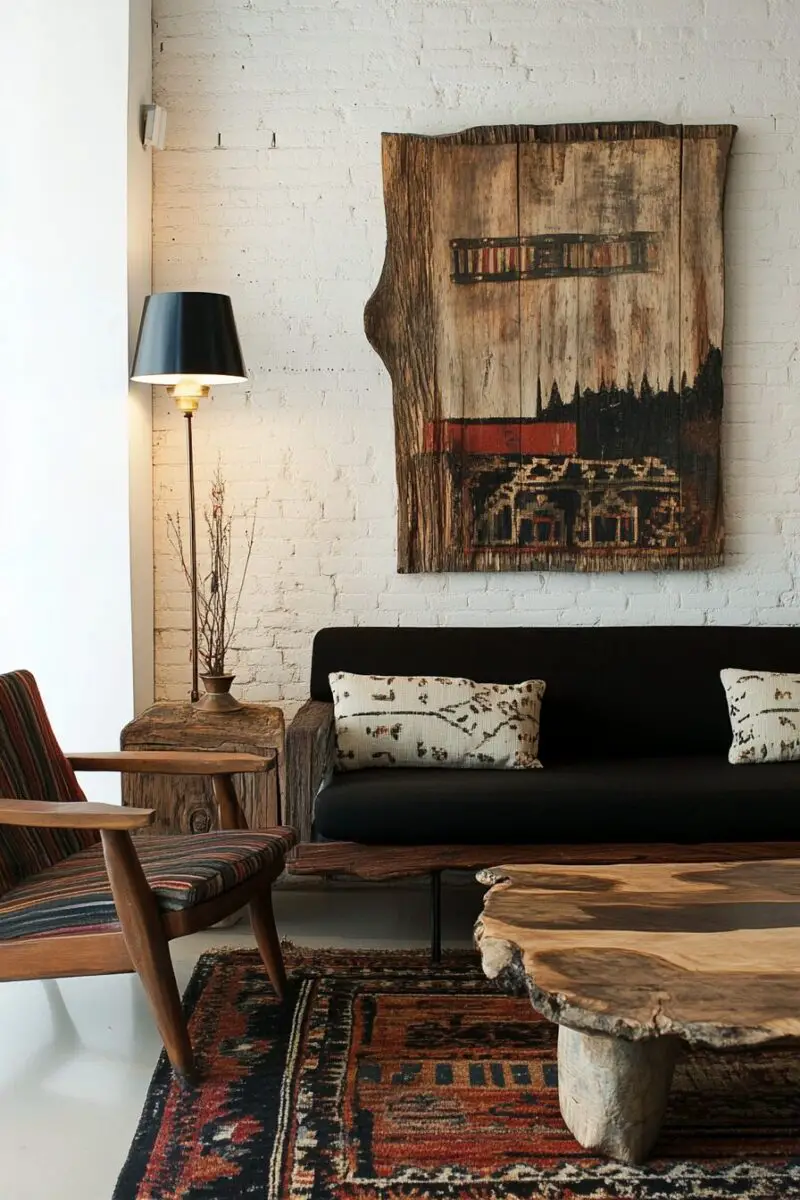
Nothing says farmhouse charm quite like aged wooden pieces with character etched into every grain and knot.
These conversation starters instantly warm up any space with their rich history and organic appeal.
Imagine an antique wooden butter churn standing proudly in your entryway, greeting guests with its weathered patina and historical significance.
Old wooden tool boxes make perfect organizers for everything from remote controls to fresh flowers, combining practicality with undeniable character.
Hunt for these treasures at estate sales, rural auctions, and antique stores where forgotten wooden implements often hide in dusty corners at bargain prices.
When selecting wooden accent pieces, look for items with authentic wear—genuine scratches, color variations, and natural aging that cannot be replicated by factory distressing.
Wooden dough bowls, once used for bread making, now serve as stunning centerpieces when filled with seasonal elements like pine cones, dried lavender, or collection of vintage doorknobs.
For your kitchen, consider mounting an antique wooden pegboard or utensil rack that harkens back to farmhouse functionality while providing practical storage.
Weathered wooden crates can be stacked as bookshelves, nightstands, or display cases—their versatility is matched only by their rustic appeal.
Don’t overlook smaller wooden treasures like hand-carved spoons, rolling pins, or butter molds that can be artfully displayed in glass-front cabinets or open shelving.
The beauty of vintage wooden pieces is their ability to blend with virtually any decor style, softening modern spaces and complementing traditional ones.
Allow these wooden elements to stand as artistic statements rather than cluttering your space—remember that in farmhouse style, each piece should earn its keep through both beauty and function.
Weathered Metal Signs
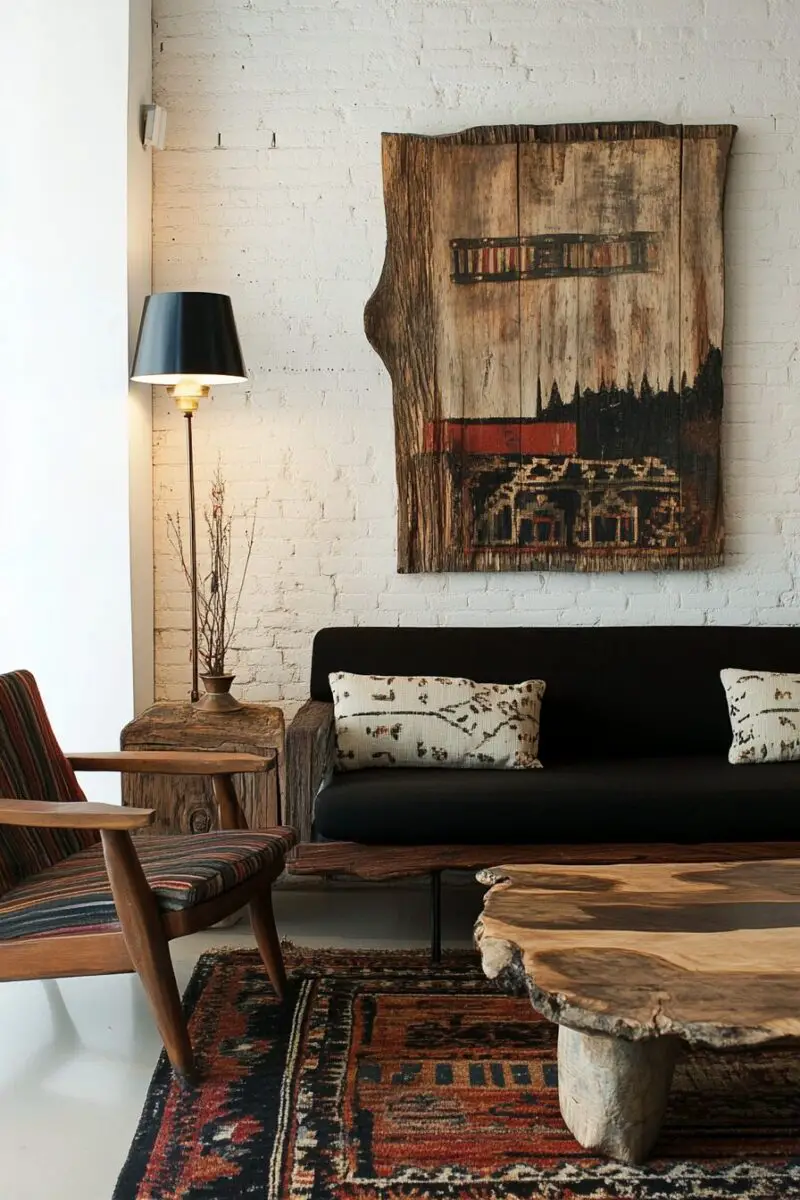
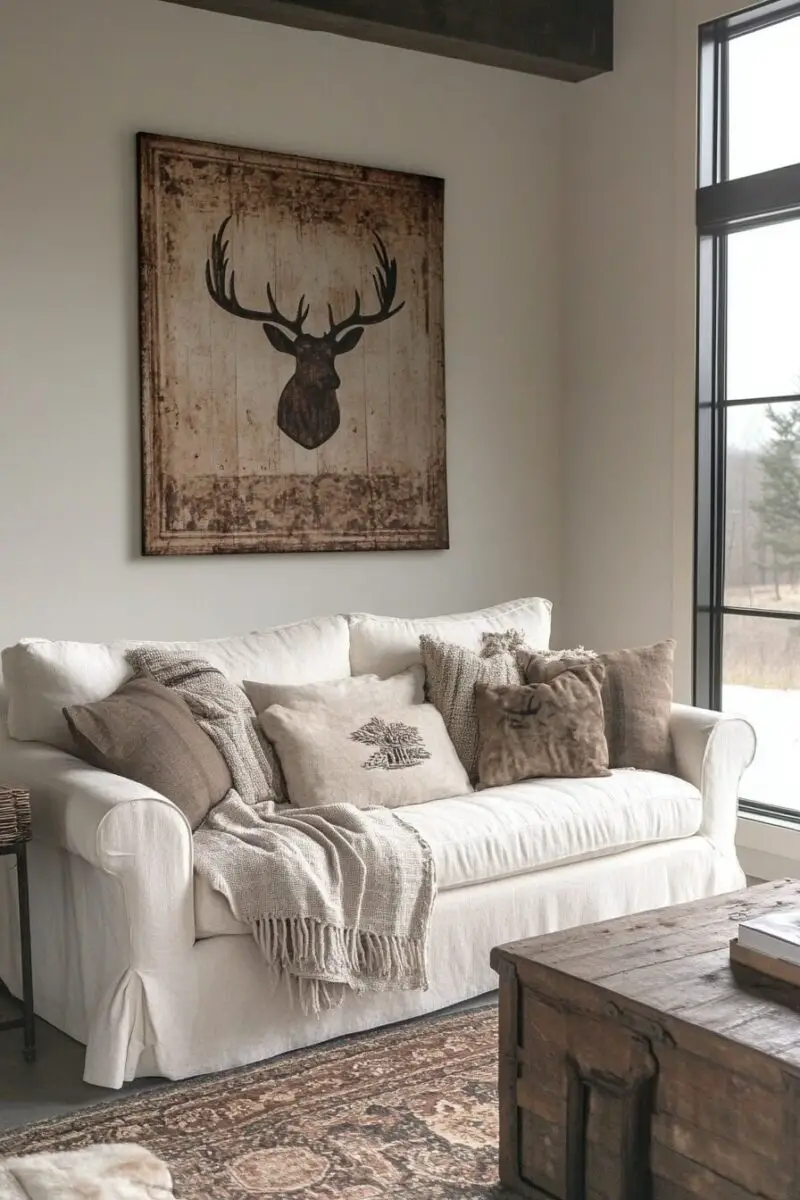
Vintage metal signs bring industrial charm and graphic interest to farmhouse-inspired spaces, creating focal points that draw the eye and spark conversation.
These rustic treasures range from authentic advertising pieces to personalized family name signs that seem to have adorned a barn for generations.
Imagine the impact of a large, slightly rusted dairy sign hanging above your fireplace, its faded lettering and worn edges testifying to decades of sun and rain exposure.
The hunt for these metal treasures becomes part of their charm—each piece discovered at a roadside antique mall or country flea market carries its own unique history.
For maximum visual impact, seek out signs with bold typography, farm imagery, or advertisements for products that have stood the test of time.
Your dining area transforms with the addition of an oversized metal sign advertising “Farm Fresh Eggs” or “Homemade Pies,” connecting your modern meals to a simpler era of food production.
Don’t limit yourself to wall hangings—three-dimensional metal signs, like those that once hung from posts or building corners, offer interesting sculptural elements.
Personalization brings these metal accents into your family story—consider custom-made signs featuring your family name, established date, or the coordinates of your home.
The contrast between weathered metal and softer elements like upholstery and window treatments creates the textural variety that makes farmhouse decor so visually interesting.
For authenticity, look for signs with genuine patina rather than mass-produced “distressed” reproductions that lack the character of true age.
Metal signs work particularly well in transition spaces like mudrooms and hallways, where their durability stands up to high traffic while their visual interest enlivens otherwise forgettable areas.
Remember that these metal accents needn’t be limited to traditional farmhouse themes—automotive, general store, or industrial signs all contribute to the collected-over-time feeling that defines authentic farmhouse style.
Reclaimed Barn Doors That Transform Ordinary Openings
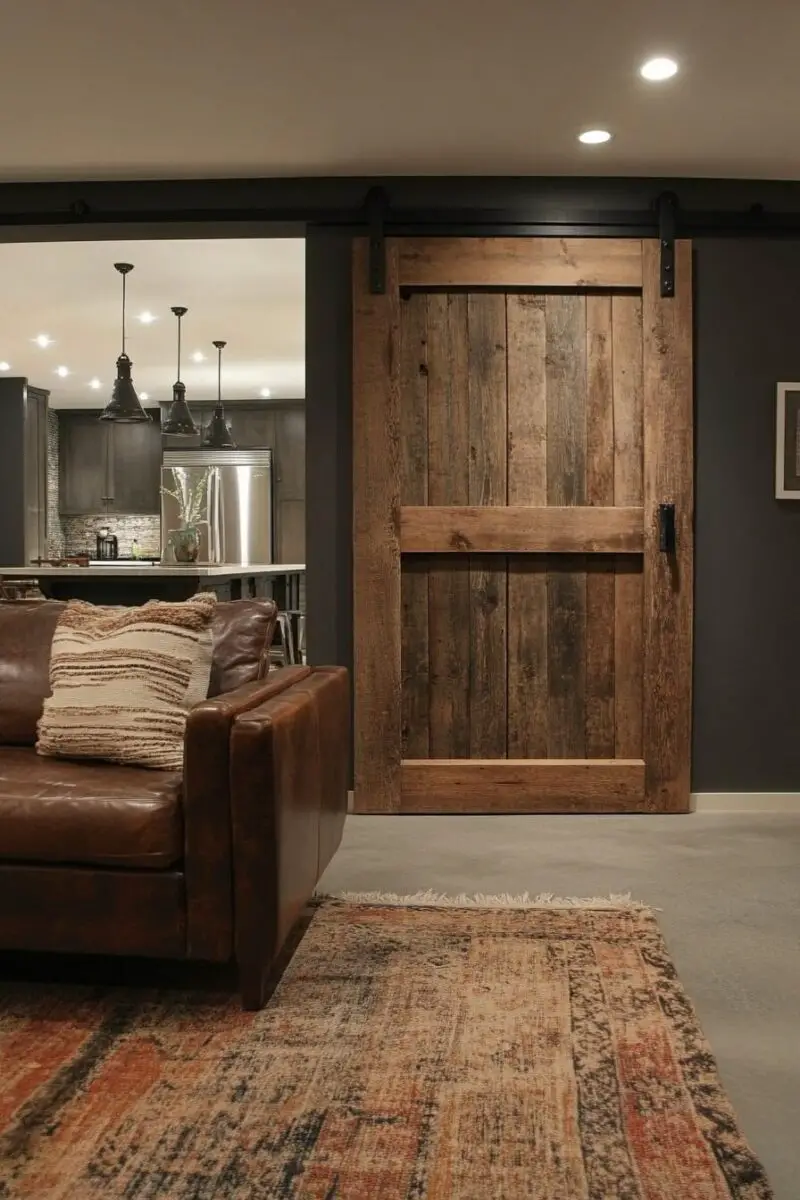
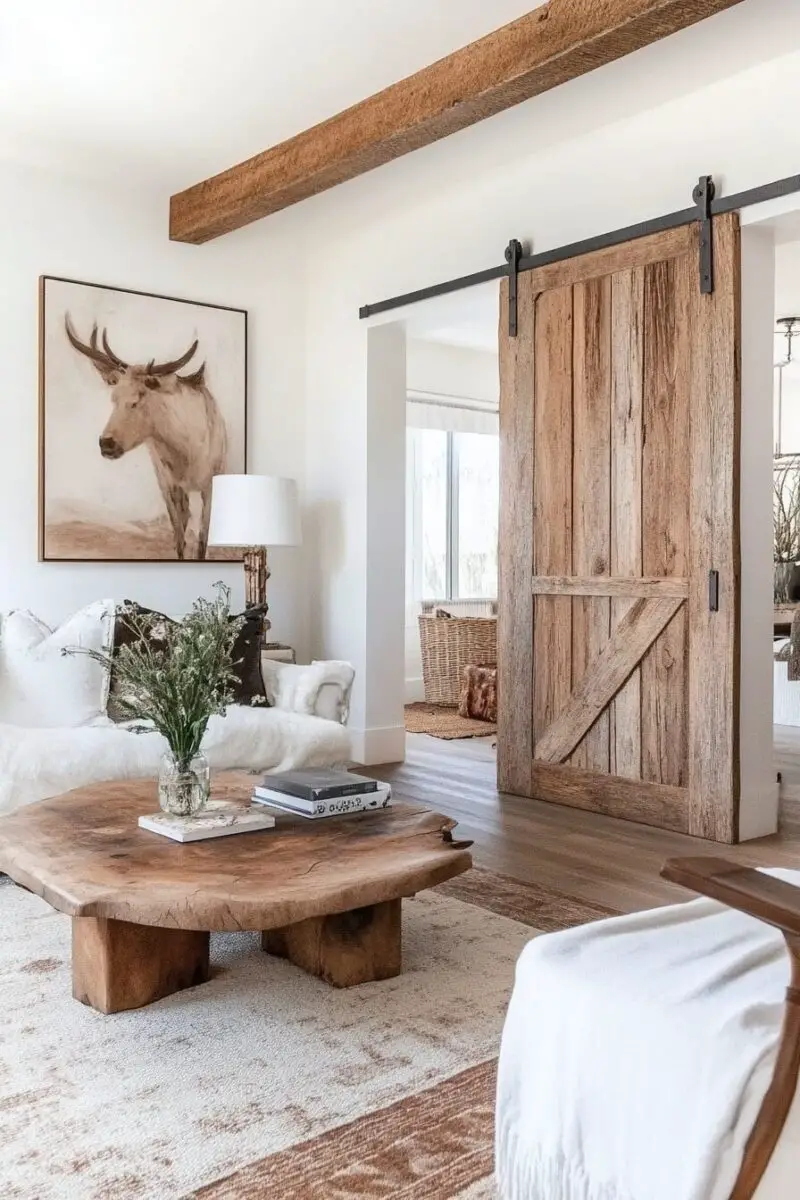
Barn doors have transcended their utilitarian farm origins to become architectural statements that instantly infuse spaces with authentic farmhouse character.
These magnificent wooden structures bring warmth, texture, and undeniable presence to interiors while offering practical space-saving benefits as sliding alternatives to traditional swinging doors.
Picture a weathered barn door with original hardware mounted on sleek black rails, creating a stunning contrast between rustic and refined as it glides open to reveal your home office.
The beauty of reclaimed barn doors lies in their imperfections—the knots, nail holes, and varying wood tones tell stories of decades exposed to the elements and agricultural use.
Finding genuine barn doors requires some detective work—architectural salvage yards, barn demolition companies, and rural estate sales are prime hunting grounds for these coveted treasures.
Before committing to installation, ensure your walls can support the considerable weight of authentic barn wood doors and the hardware required for proper functioning.
Beyond the obvious application for room entrances, consider using smaller barn door panels as dramatic headboards, window coverings, or even mounted on walls as oversized art pieces.
Color options range from the natural weathered grays of aged wood to doors with peeling layers of paint that reveal a timeline of the structure’s history and previous owners’ preferences.
The hardware you choose—from simple black iron to more ornate bronze fixtures—significantly impacts the overall aesthetic, allowing you to dial the rusticity up or down.
For spaces where a full-sized barn door won’t work, consider half-doors, Dutch doors, or even incorporating barn door elements into built-in furniture pieces for a subtle farmhouse reference.
The versatility of barn doors extends to every room—they make stunning bathroom entrances, graceful room dividers, and unexpected kitchen pantry solutions.
Remember that proper installation is crucial—these showstopping elements deserve professional mounting to ensure smooth operation and structural integrity for years of trouble-free use.
Mason Jar Lighting

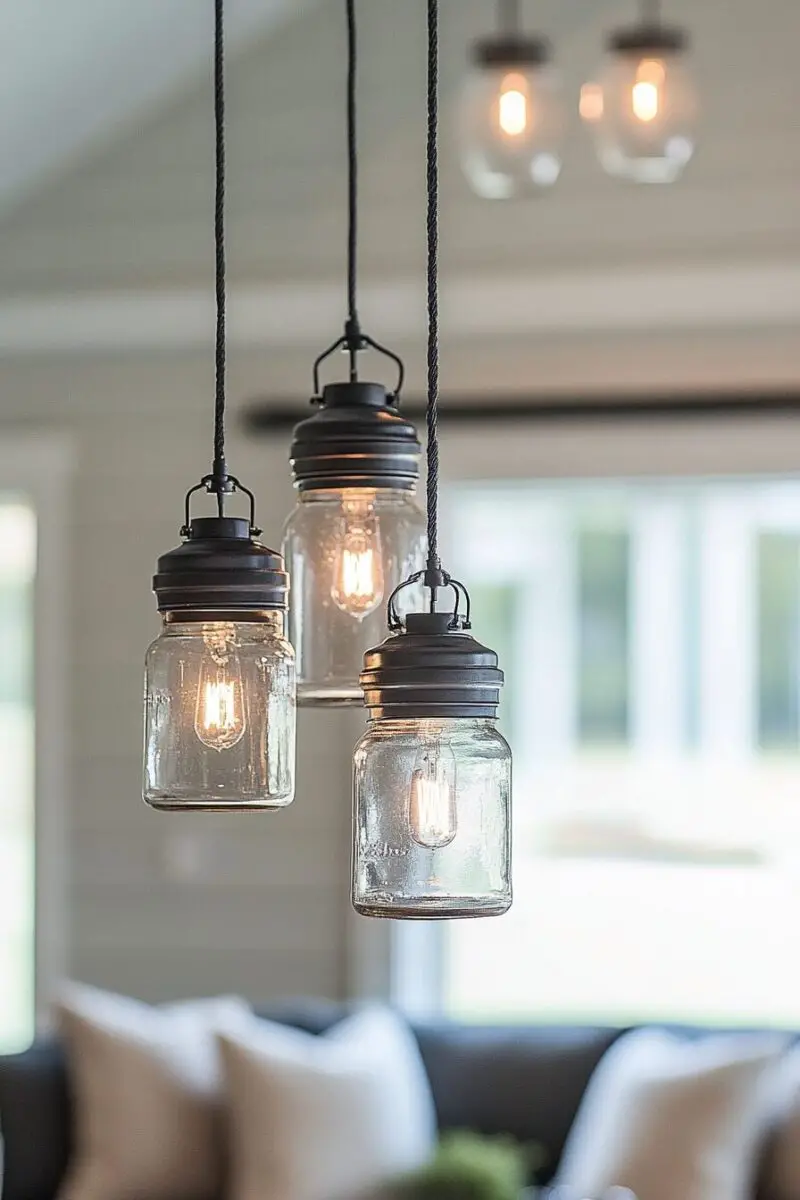
Vintage mason jars, once purely functional for preserving summer’s bounty, now illuminate farmhouse spaces with their distinct blue-green glow and historical significance.
These humble glass vessels transform into captivating lighting fixtures that cast warm, welcoming patterns across your ceilings and walls.
Imagine a cluster of authentic blue Ball jars suspended at varying heights above your dining table, their textured glass diffusing light into a magical constellation during evening meals.
The beauty of mason jar lighting lies in its chameleon-like ability to feel simultaneously rustic and modern, fitting seamlessly into farmhouse interiors while satisfying contemporary design sensibilities.
Hunt for genuine vintage jars at estate sales and antique stores where their aged glass and authentic embossing contribute to the fixture’s character in ways reproductions simply cannot match.
For your kitchen island, consider a row of clear mason jars inverted over simple pendant lights, creating an affordable yet impactful lighting solution that honors the heart of farmhouse traditions.
Bathroom vanities take on new personality with wall sconces featuring mason jars as shades, their textured glass softening LED bulbs into a flattering, ambient glow.
Creative mounting options abound—from jars suspended from reclaimed wood planks to metal chandelier frames that hold multiple jars in elaborate arrangements.
The versatility of these lighting elements extends beyond ceiling fixtures—table lamps with mason jar bases bring the same rustic charm to bedside tables and reading nooks.
For authentic farmhouse character, mix jar sizes, colors, and manufacturers rather than creating too-perfect symmetrical arrangements that betray the collected-over-time aesthetic.
Energy-efficient LED bulbs with warm color temperatures (2700-3000K) complement the vintage glass perfectly, creating energy savings while maintaining the nostalgic amber glow.
Remember that proper wiring is essential—while DIY mason jar lamp kits are widely available, ceiling fixtures and permanent installations deserve professional electrical work for safety and longevity.
✨Click to Get My 101 FREE Designer Room Ideas
Distressed White Furniture Pieces That Anchor Your Spaces
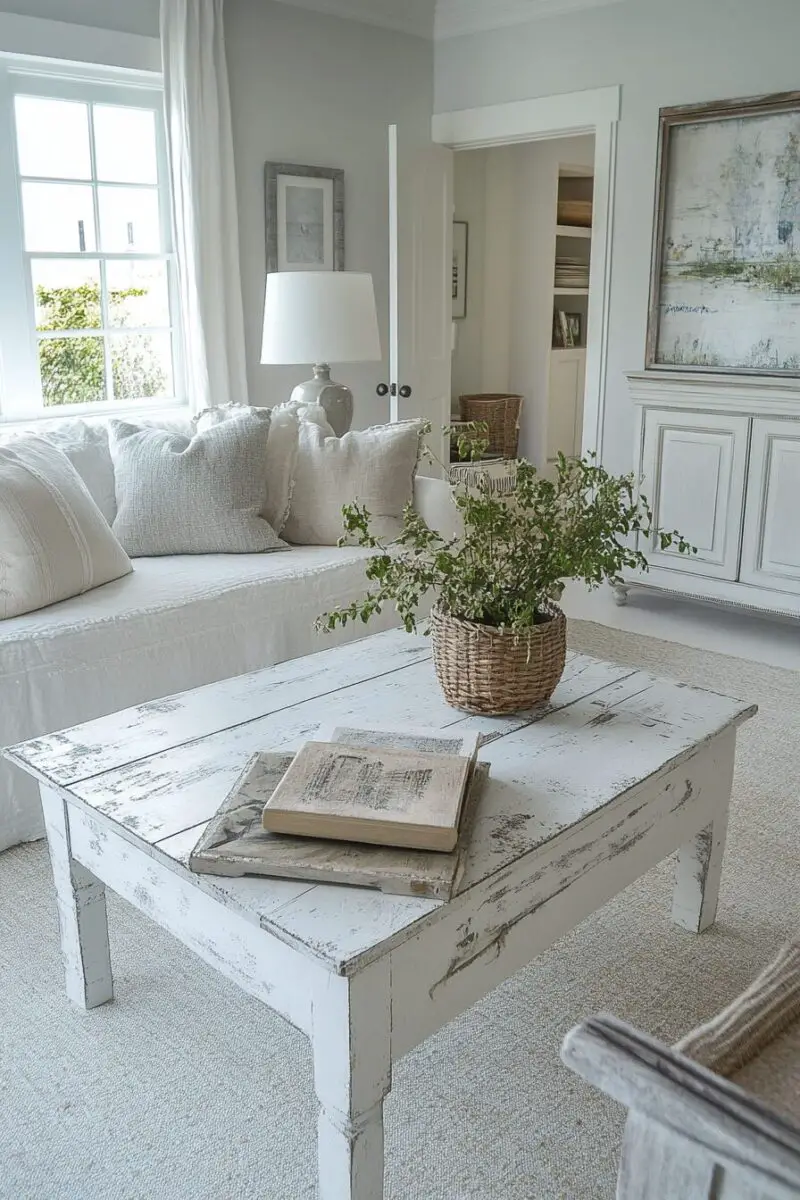

Weathered white furniture stands as the backbone of authentic farmhouse interiors, providing the perfect foundation for more colorful and textural accents throughout your home.
These signature pieces—from hutches to headboards—instantly communicate the farmhouse aesthetic with their time-worn finishes and unpretentious forms.
Imagine a magnificent white-washed hutch dominating your dining area, its gently chipped paint and worn edges revealing hints of wood beneath, testifying to generations of use and care.
The appeal of these pieces lies not in perfection but in character—authentic distressed finishes show uneven wear patterns that mass-produced “antiqued” furniture simply cannot replicate.
Finding genuine vintage pieces requires patience—estate sales in rural areas, auctions, and specialized antique dealers often yield the most authentic treasures with legitimate provenance.
For those willing to invest sweat equity, solid wood furniture found secondhand can be transformed with milk paint and strategic distressing techniques to achieve an authentic aged appearance.
White serves as the perfect canvas in farmhouse design—its brightness keeps spaces feeling open and airy while the distressed finish prevents it from appearing too stark or formal.
The versatility of distressed white extends beyond wood—painted metal beds, enamel-topped tables, and even repurposed architectural elements like mantels all contribute to the cohesive look.
For maximum impact, seek pieces with interesting details—beadboard panels, glass-front cabinets, turned legs, or unique hardware add visual interest to the simple white palette.
These furniture anchors work hardest when allowed breathing room—resist the urge to crowd them with too many accessories, letting their substantial presence speak for itself.
Remember that truly authentic farmhouse style embraces imperfection—water rings, minor scratches, and signs of daily use add to rather than detract from these beloved white pieces.
Salvaged Window Frames That Frame Your View of the Past
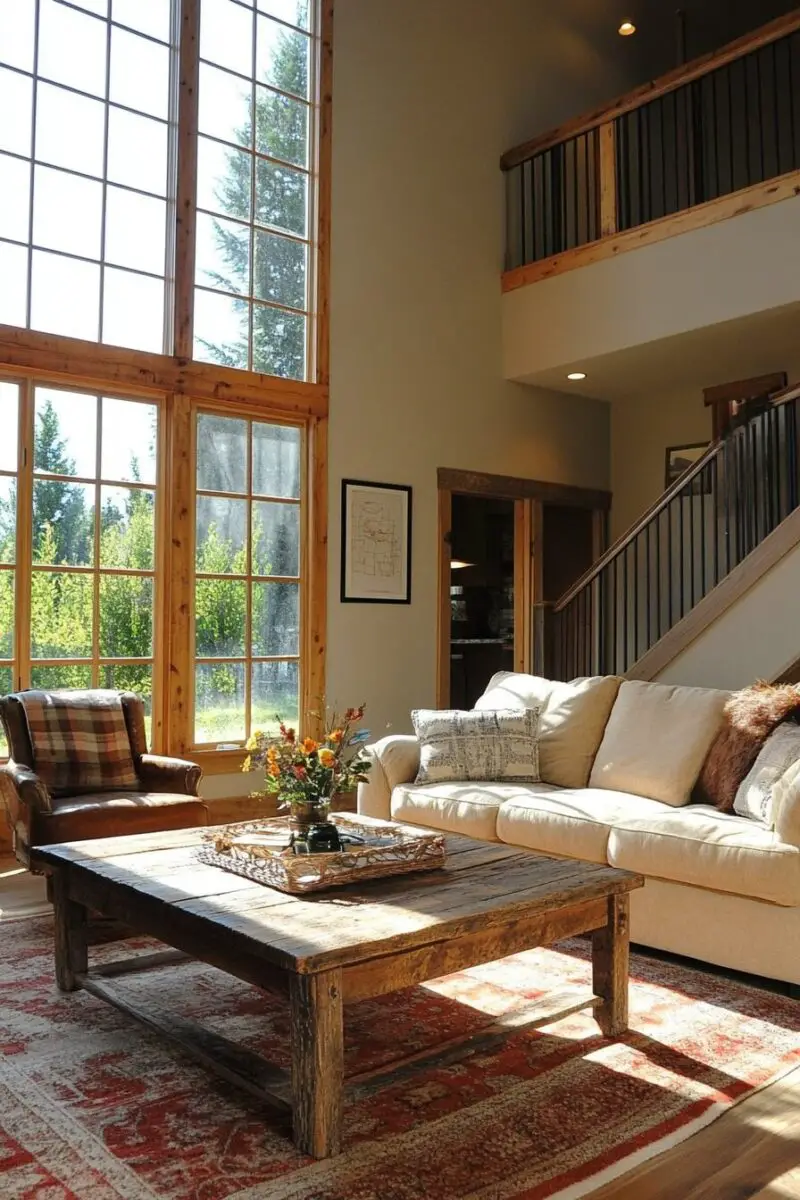
Discarded window frames from demolished buildings transform into architectural art pieces that add structural interest and historical depth to plain walls.
These reclaimed gems—with their wavy glass, peeling paint, and weathered frames—serve as portals to the past while functioning as unique display opportunities.
Imagine a wall of mismatched antique window frames arranged gallery-style above your sofa, some fitted with mirrors, others framing vintage photographs or botanical prints.
The character of old windows comes from their imperfections—subtle ripples in hand-blown glass, layers of different colored paints, and the authentic wear patterns of decades of opening and closing.
Hunting for these architectural salvage pieces becomes an adventure—demolition sites, rural auctions, and architectural salvage yards yield the most authentic specimens with genuine patina.
For dramatic impact, consider mounting a particularly large window frame directly to the wall opposite a real window, creating an optical illusion that visually expands your space.
Your hallway transforms with a row of identical window frames repurposed as photo galleries, each pane showcasing a different family photograph or pressed botanical specimen.
Don’t limit these treasures to wall applications—window frames with their glass intact make stunning tabletops when mounted on bases, while window frames without glass become unique room dividers.
The versatility of window frames extends to outdoor spaces—mount weather-resistant frames on garden walls or fences to create the illusion of views into another garden room.
For maximum visual interest, seek windows with unique shapes and details—arched tops, multiple divided panes, or original hardware all add to their architectural significance.
Cleaning and preserving these finds requires care—gentle removal of loose paint (being mindful of potential lead in older paints), stabilization of loose joints, and subtle reinforcement preserve their character.
Remember that authentic farmhouse style embraces the perfectly imperfect—a window frame with a missing pane or slightly warped wood often has more character than a pristinely preserved specimen.
Vintage Textiles That Layer History Into Every Room
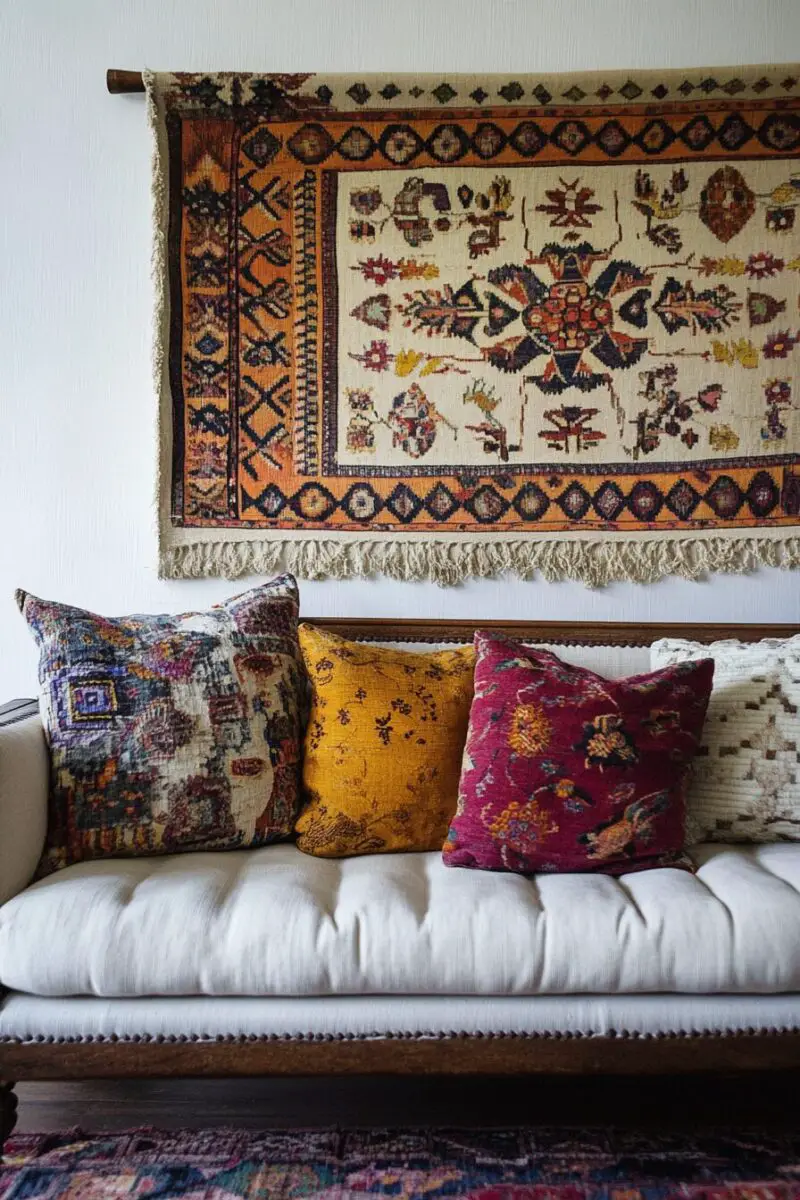

Antique fabrics weave stories of American domestic life throughout your home, adding softness, pattern, and undeniable authenticity to farmhouse interiors.
These textile treasures—from hand-stitched quilts to grain sacks with faded typography—bring tactile comfort and visual interest that manufactured fabrics simply cannot replicate.
Imagine draping a nineteenth-century wedding ring quilt across your bed, its hand-sewn patterns slightly uneven and fabrics faded to the perfect palette of muted colors that only time can create.
The beauty of vintage textiles lies in their subtle imperfections—the slightly uneven stitches, mended sections, and gently faded colors tell stories of the hands that created and used them.
Finding authentic textile pieces requires dedication—estate sales in rural areas, specialized antique textile dealers, and occasionally lucky finds at ordinary thrift stores yield the best discoveries.
For maximum impact in your living spaces, layer different textile types—perhaps a grain sack pillow atop a muted floral chair with a hand-loomed throw draped casually across one arm.
Your dining table transforms with a runner crafted from antique linen feed sacks, their faded blue or red typography creating graphic interest beneath simple white ironstone serving pieces.
Don’t overlook the dramatic potential of textile wall hangings—a vintage quilt, framed feed sack, or mounted collection of antique handkerchiefs creates unexpected artistic focal points.
The neutral palette typical of many antique American textiles—cream, tan, faded blue, and soft red—complements virtually any color scheme while adding subtle pattern and texture.
The durability of vintage textiles often surprises modern homeowners—many century-old linens remain perfectly functional after surviving decades of use and countless laundry days.
Remember that proper care extends the life of these irreplaceable textiles—gentle washing, storage away from direct sunlight, and occasional refolding prevents permanent creases and damage.
Tech-Concealing Vintage Cabinets That Merge Old and New
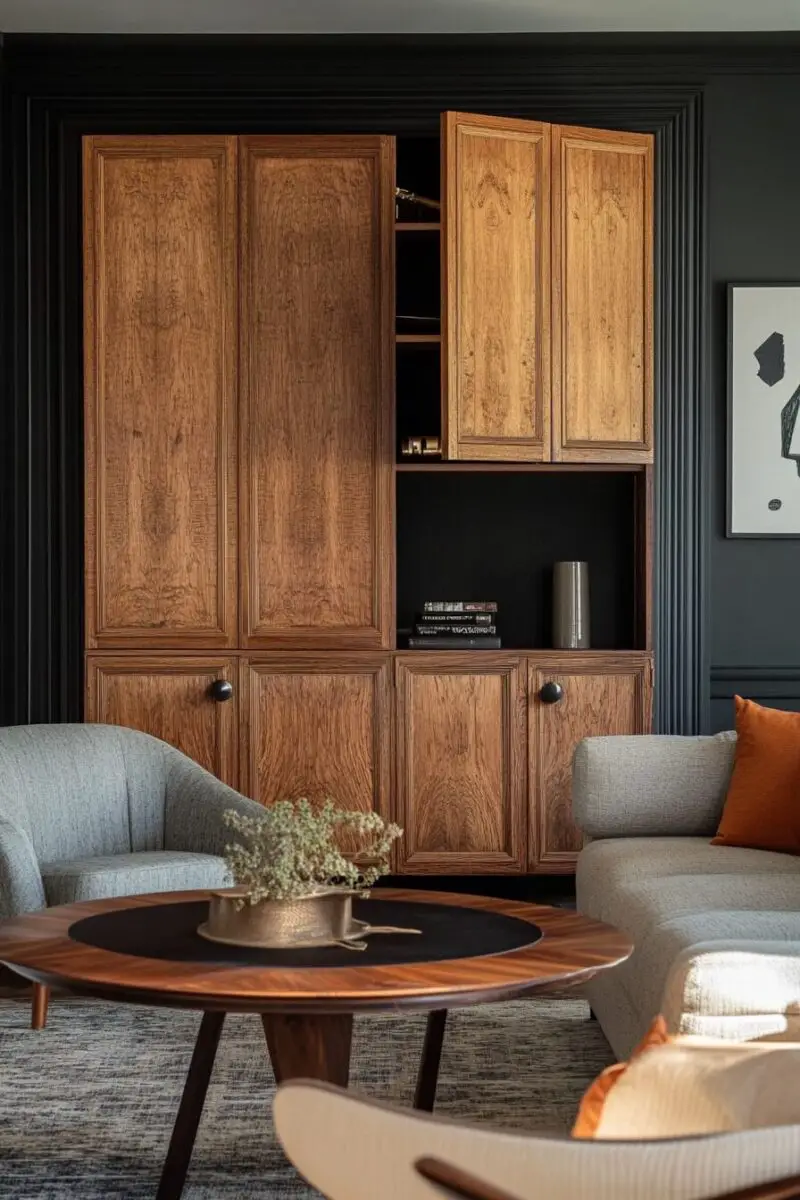
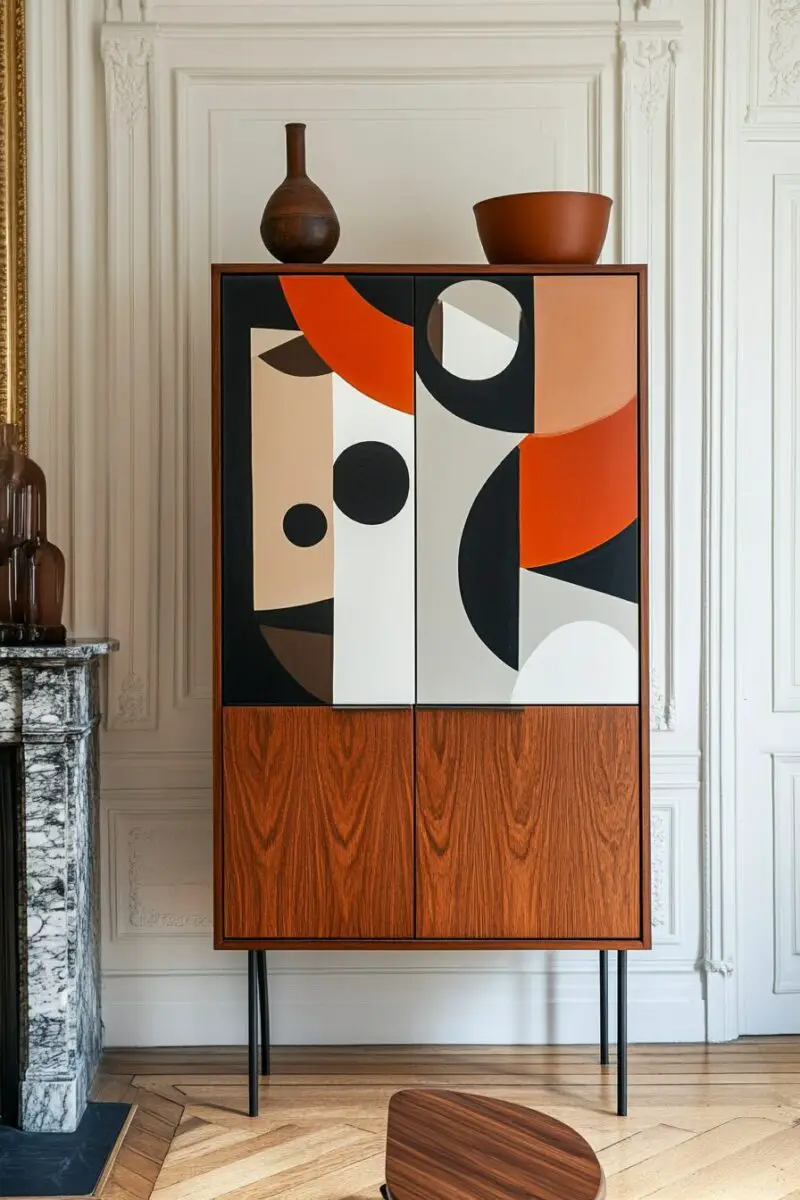
Modern technology finds unexpected harmony when housed within antique cabinetry, creating a perfect marriage between contemporary convenience and historical craftsmanship.
These ingenious conversions—from vintage radio cabinets transformed into charging stations to antique armoires concealing state-of-the-art entertainment systems—solve the modern dilemma of unsightly electronics.
Imagine a magnificent 1930s phonograph cabinet, its rich walnut exterior preserved while its interior now houses your wireless speaker system, invisible until music mysteriously begins flowing from this apparent antique.
The beauty of these technology-concealing pieces lies in their surprise factor—guests expecting purely decorative antiques discover functional modern conveniences thoughtfully integrated into historical elements.
Finding suitable cabinets for conversion requires vision—look for pieces with adequate ventilation possibilities, appropriate dimensions for your devices, and construction solid enough to handle modifications.
For a stunning home office solution, consider a farmhouse secretary desk with its drop-front writing surface hiding your laptop and monitor, allowing you to close away work clutter at day’s end.
Your living room viewing experience transforms when a vintage bread box opens to reveal a compact projector that displays movies on the opposite wall, eliminating the need for a conventional television.
Don’t overlook smaller technology concealments—antique silver cigarette boxes repurposed as remote control holders, vintage books hollowed to store charging cables, or medicine cabinets retrofitted as router hideaways.
✨Click to Get My 101 FREE Designer Room Ideas
Industrial-Farmhouse Lighting That Redefines Rustic Elegance
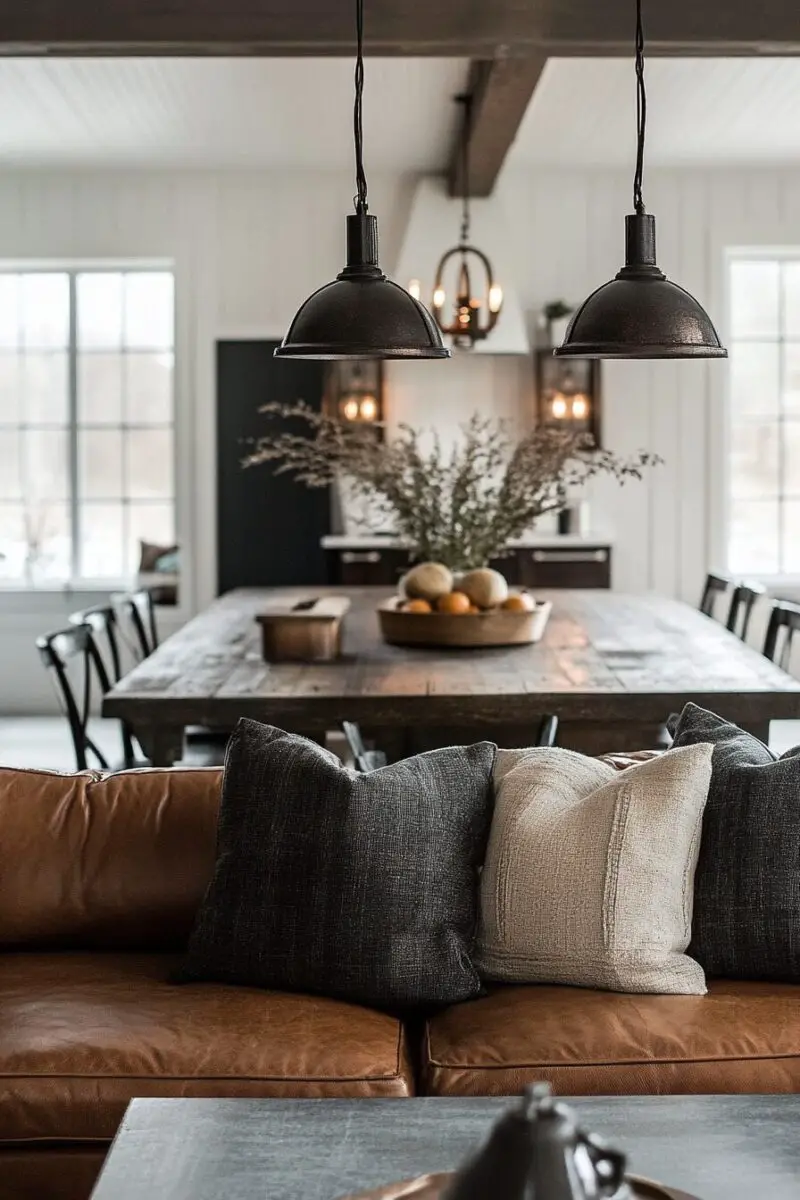
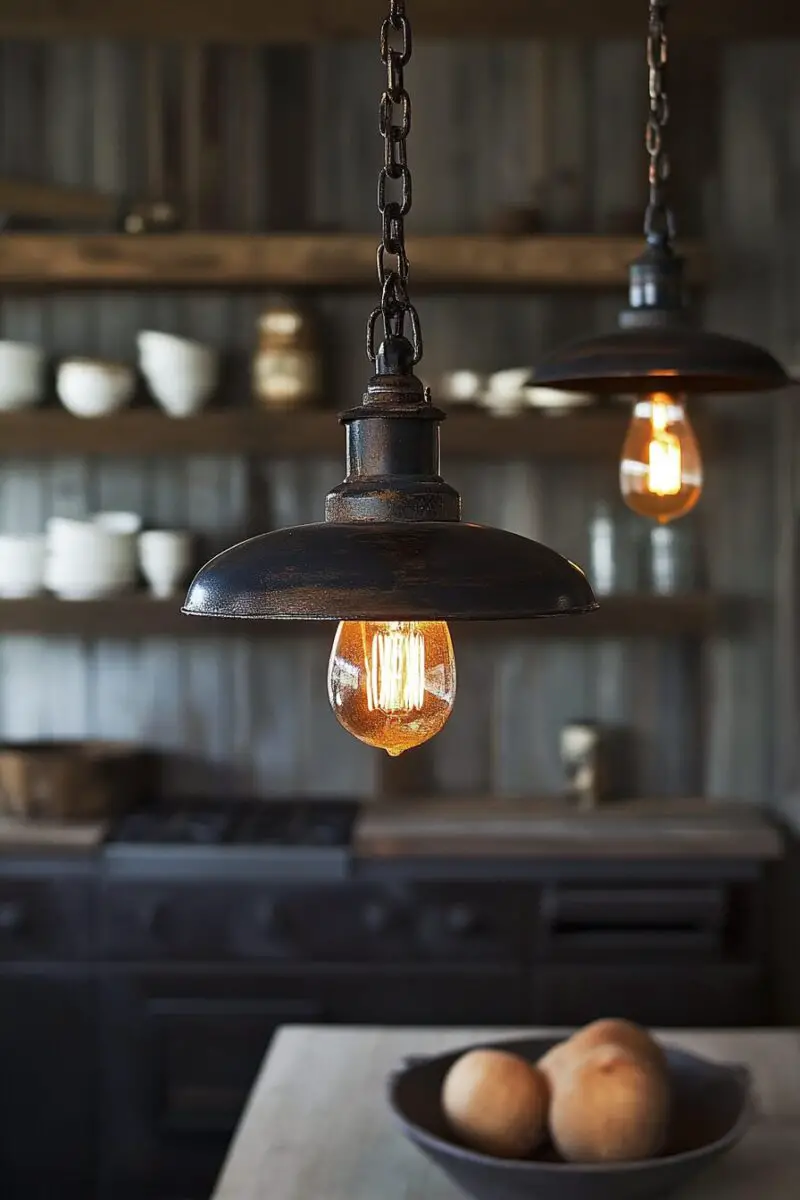
Contemporary lighting fixtures inspired by industrial spaces bring architectural edge to farmhouse interiors, creating a sophisticated blend of rustic warmth and urban cool.
These statement pieces—from oversized warehouse pendants to sleek pipe sconces—introduce clean lines and mixed metals that prevent traditional farmhouse elements from feeling too precious or predictable.
Imagine a monumental factory pendant suspended above your dining table, its matte black finish and exposed Edison bulbs casting amber light across the weathered wood surface and illuminating family gatherings with industrial-inspired warmth.
The appeal of these hybrid fixtures lies in their nod to both agricultural history and industrial innovation—combining references to America’s farming past and manufacturing heritage in striking visual statements.
Finding the perfect industrial-farmhouse lighting involves balancing scale and finish—substantial fixtures with aged brass, blackened steel, or zinc finishes complement traditional farmhouse elements without competing with them.
For dramatic effect in living areas, consider clustered pendant arrangements with varied heights, where simple glass globes hang from weathered rope or raw metal chains in asymmetrical groupings.
Your bathroom transforms with pipe-constructed vanity lights mounted to reclaimed barn wood backplates, combining industrial rawness with organic texture in unexpected harmony.
Don’t overlook directional lighting opportunities—adjustable articulating wall lamps with mechanical details bring focused illumination to reading nooks while contributing architectural interest even when not in use.
Family Heirlooms Display That Connects Generations

Personal ancestral treasures transformed into intentional displays create powerful connection points that merge family history with interior design.
These meaningful collections—from grandfather’s pocket watch collection to great-grandmother’s hand-written recipe cards—elevate farmhouse decor from merely stylish to deeply significant.
Imagine a gallery wall featuring black-and-white photographs of your family’s homestead, the weathered frames surrounding images that document your personal connection to rural American life.
The emotional resonance of family heirlooms creates depth in your decor that purchased items—no matter how authentic or beautiful—simply cannot replicate.
Gathering these meaningful pieces often involves conversations with older family members, explorations of attics and storage spaces, and sometimes surprising discoveries during home renovations.
For maximum impact, create thoughtful groupings rather than scattered individual pieces—perhaps your grandmother’s collection of rolling pins displayed together with her handwritten pie crust recipe framed nearby.
Your bookshelf transforms when interspersed with family artifacts—great-grandfather’s pocket knife, mother’s childhood toys, or father’s collection of vintage fishing lures among your books.
Don’t overlook ephemera as display-worthy treasures—framed letters, preserved documents, and vintage family photographs tell stories that connect your home to previous generations.
The beauty of incorporating heirlooms lies in their ability to spark conversations—each piece comes with stories that can be shared with guests and passed down to younger family members.
The most successful heirloom displays balance prominence with protection—treasured items should be visible but positioned away from direct sunlight, high traffic areas, and curious little hands.
Remember that the most meaningful farmhouse interiors tell your specific story—while design trends come and go, the emotional connection to family history creates spaces with genuine soul and staying power.
Antique farmhouse decor brings a sense of history, character, and authenticity that can transform any modern home into a space that feels genuinely welcoming and timelessly appealing.
The beauty of these ten ideas lies in their versatility—they can be implemented fully for a comprehensive farmhouse look or selectively incorporated as accent elements in contemporary spaces.
Remember that the most successful farmhouse-inspired homes balance authenticity with livability, creating spaces that honor the past while serving present-day needs.
As you begin collecting and displaying these antique elements, allow your personal connection to each piece to guide your decisions—the stories behind your decor ultimately matter more than perfectly following any design formula.
The true essence of farmhouse style lies in its honesty, simplicity, and connection to the rhythms of home life—qualities that make these spaces not just beautiful but deeply comforting in our fast-paced modern world.


